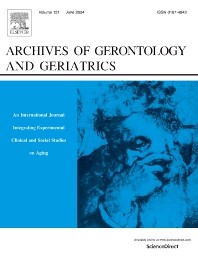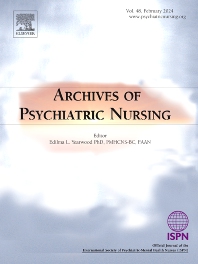Journals in Medicine
The Medicine portfolio strives to advance medicine by delivering superior evidence-based education, reference information and decision support tools to clinicians, trainees, and students. Specialties covered include Anesthesiology, Internal Medicine, Surgery, Radiology & Imaging, Pathology, Orthopedics, Ophthalmology, Infectious Disease, Allergy & Immunology, Pediatrics, Obstetrics & Gynecology, Hematology & Oncology, Plastic Surgery, and many more. The Medicine portfolio includes world-renowned titles such as Gray's Anatomy and Netter Atlas of Human Anatomy, Braunwald's Heart Disease, Goldman-Cecil Medicine, Osborn's Brain, Dermatology (Bolognia), Diagnostic Ultrasound (Rumack), The Harriet Lane Handbook, Fanaroff and Martin's Neonatal-Perinatal Medicine, Ferri's Clinical Advisor, Conn's Current Therapy, and more.
- ISSN: 1875-2136
Archives of Cardiovascular Diseases

- ISSN: 0167-4943
Archives of Gerontology and Geriatrics

- ISSN: 1878-6529
Archives of Legal Medicine

- ISSN: 0188-4409
Archives of Medical Research

- ISSN: 0003-9969
Archives of Oral Biology

- ISSN: 0003-9993
Archives of Physical Medicine and Rehabilitation

- ISSN: 0883-9417
Archives of Psychiatric Nursing

- ISSN: 0300-2896
Archivos de Bronconeumología

- ISSN: 0365-6691
Archivos de la Sociedad Española de Oftalmología

- ISSN: 2173-5794
Archivos de la Sociedad Española de Oftalmología (English Edition)

Related subjects
Aids and hiv
Allergy and clinical immunology
Anatomy
Anesthesiology
Basic medical science
Biochemistry
Cancer
Cardiology and cardiovascular medicine
Chemotherapy
Clinical chemistry
Clinical medicine
Clinical neurology
Colon and rectal surgery
Critical care
Dermatology
Diagnostic imaging
Diet therapy
Diseases
Emergency medicine
Endocrinology and metabolism
Epidemiology
Evidence based medicine
Family practice
Forensic medicine
Gastroenterology and hepatology
General medicine
Genetics
Geriatrics
Health care delivery
Health information management
Health policy
Health risk assessment
Hematology
Holistic medicine
Infectious diseases
Internal medicine
Laboratory medicine
Medical administration
Medical biotechnology
Medical caregiving
Medical diagnosis
Medical education and training
Medical ethics
Medical informatics
Medical neuroscience
Medical reference
Medical research
Mental health
Microbiology
Nephrology
Neurosurgery
Obstetrics and gynecology
Oncology
Ophthalmology
Optometry
Orthopedics and biomechanics
Osteopathy
Otorhinolaryngology
Pain medicine
Pathology
Pediatrics
Perinatology and neonatology
Pharmacology
Physical medicine and rehabilitation
Physicians
Physiology
Plastic surgery
Preventive medicine
Psychiatry
Public environmental and occupational health
Pulmonary and respiratory medicine
Radiology nuclear medicine and medical imaging
Reproductive medicine
Review and reference
Rheumatology
Sports medicine
Substance abuse
Surgery
Thoracic surgery
Toxicology
Ultrasonography
Urology
Vascular surgery